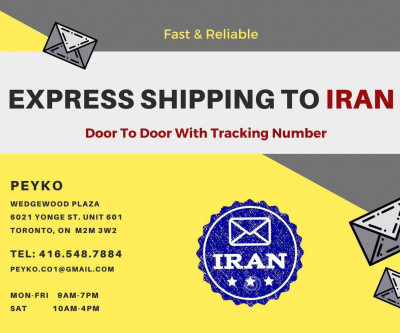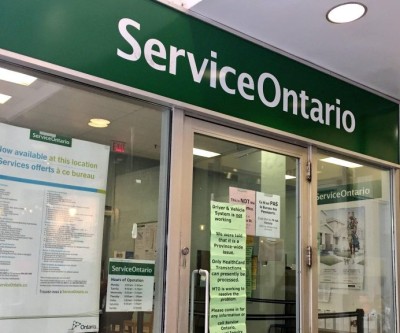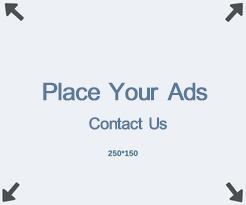
How to Buy a Car in Canada
Table of Contents
The process of buying a car in Canada can be confusing for newcomers to the country. Canada is a large and beautiful country, full of open spaces, but often offers limited public transportation, especially outside of major cities. This makes owning a car a necessity for many who decide to settle in Canada. While some specific provinces may apply slightly different regulations, this article aims to walk you through the general process of buying a used or new car in Canada, so stay tuned!
When is the best time to buy a new car in Canada?
When it comes to buying a new car, timing is really important. Car dealers adjust their car prices throughout the year for various reasons. November is the best time to buy the cheapest new cars in Canada. This is because car dealerships are making room for new car models that will enter the market in the next few months. So, they are trying to get rid of their old inventory. Although these cars are considered "older" they are still brand new and not out of date, you are making the most of the November selling season by buying these cars!
Moreover, at the end of the month, car dealers will be under pressure to meet their monthly sales quota. Because of this, the seller is more willing to do business with you. Pay special attention to shopping discounts during special events such as Boxing Day or Black Friday. Car dealerships, like other industries, offer special services and discounts.
Contact several car dealers to know the price. There is nothing wrong with receiving multiple offers from different agencies!
Car dealers tend to get customers to focus on the monthly payment for the deal, not the actual price of the car. But stay focused on the total price of the car, after agreeing on the price of the car, we can talk about other things such as installment payments, etc.
Steps to buy a car in Canada
Step 1: Set budget and check insurance
Budgeting is the first step to buying a car in Canada:
Specify the maximum amount of money you are willing to pay in full to purchase a vehicle. Typically, outright purchases without installments result in a lower overall cost and do not include any interest or interest.
Specify the maximum amount you want or can pay per month as an installment for the vehicle.
Insurance: You'll need insurance before you can get behind the wheel of a car in Canada, so check your eligibility before you buy. Your driving record in Canada and having a valid license (foreign or Canadian) is a necessary condition to get car insurance. Major national insurance providers include Intact Financial, Aviva Canada and wawanesa.
Step 2: Look for a suitable car
There are two common ways to buy a car in Canada:
Buying from a private seller: A person who sells you a vehicle that they own.
Factory purchase: In this type of deal, your counterparty is most likely a car dealership (new car sales will be almost exclusively through dealerships).
Automatic or manual transmission: Automatic transmissions are much more common in Canadian cars than manual transmissions. Note that car models with manual transmissions often cost a few percent less than models with automatic transmissions.
Search Online: The most efficient way to start looking for cars for sale in Canada is online. Websites offer a quick way to check out cars (with pictures, prices, mileage details and location all easily accessible).
Some of the most common car sales websites across Canada to find new and used cars are: ca, auto123.ca and carpages.ca. For private sales of used cars, Craigslist and Kijiji are popular options.
Note: The Canadian Black Book provides an accepted guideline for determining the approximate average value of used and new cars. This list is a valuable resource for evaluating prices when buying a car in Canada.
Step 3: Test drive and warranty details
Before buying a car in Canada, it is important to test drive the car. The purpose of a test drive is to learn more about the current condition and performance of a vehicle. Test drives are offered as standard by any reputable dealership, who will usually ask for a copy of your driver's license in advance. The time after the test drive is an ideal opportunity to examine the exterior of a vehicle. Issues to watch out for include body damage, corrosion, faulty lights, or bald tires. Just before and during the test drive, attention should be paid to interior condition, steering response, engine performance, dashboard electronics, brake performance, and suspension (especially in used cars).
Warranty: If the test drive is satisfactory, the next step is to create a warranty (if any) on the car. Most new cars in Canada offer at least a three-year initial warranty. For used cars, various additional warranties can be obtained depending on the services provided by the previous owner of the car.
Step 4 - Technical inspection and provincial safety test for vehicles
If you're happy with your vehicle's test drive and warranty options, you should make sure that any provincial safety tests (such as Manitoba and Ontario) required for initial sale or resale have been performed by a certified mechanic. Dealerships usually cover this when selling a new car. Regardless of provincial requirements, a mechanical inspection is highly recommended after a satisfactory test drive of any used vehicle. Buyers must choose one of the following for this purpose:
Garage inspection
Most dealerships allow you to temporarily tow the vehicle to the garage for a few hours for inspection. It is recommended to use an independent and third-party mechanic, not affiliated with a dealership, as they will give you a more honest report. It is common for garage mechanics to provide an accurate report on the condition of the vehicle.
Inspection of mobile mechanics
Mobile mechanical inspection is a popular choice across Canada, especially in major cities. This eliminates the need for the prospective buyer to take the car to the garage and wait for the inspection to take place. This report is usually provided directly to the buyer by phone or email.
Note that some provinces, including Ontario, require the seller to provide a UVIP (Used Vehicle Information) when selling a used car. UVIP indicates whether a car has been rebuilt after an accident or is involved in third-party liabilities. While this document is not mandatory across Canada, similar reports are provided through private services such as Carfax and Carproof.
Step 5 - Purchase process
Once the buyer is satisfied with the current condition of the car and the car in question has passed an acceptable safety test, the purchase and registration process begins. A contract must be concluded and signed for a private sale. Payment by electronic money order or check is the most common method. The seller removes his license plate from the car and the new owner must attach the received license plates after the car is registered. The relevant delivery documents are signed by both parties and usually registered by provincial authorities (such as SAAQ in Quebec, ICBC / Autoplan in British Columbia, etc.).
Fortunately, car dealerships usually handle both the car sales and registration process for the buyer. This means that the buyer does not need to stick the license plate on his car and the company will do the process of sticking the license plate for him. For one-time payments to dealers, direct payment of electronic funds through Interac is the best and safest payment method. Note that your bank may need to increase your transaction limit to allow this payment. Check payments are also common in Canada but may take time to process.
Car crossing the border
If you want to buy a car in the United States and bring it to Canada, it will work as long as you pay attention to a few important points:
Make sure your Canadian car can pass US environmental and safety standards.
Check the safety requirements for the state where you plan to live and drive in the United States.
Collect all insurance, bill of sale and registration documents.
When entering customs, pay 2.5% duty of the purchase value of your car.
For dealerships that facilitate leasing or installment plans, buyers should ensure that all details and variable rates are fully reviewed before signing.
Finally, the buyer should contact their chosen insurance provider to make sure they offer "before boarding" insurance. This insurance is usually activated immediately after coordination.
Are there programs to help new immigrants when buying a car?
Banks like Royal Bank of Canada (RBC) and Scotiabank offer loans to help new Canadians with no credit history. The problem with these programs is that the terms of these loans are more limited. The maximum amount of these loans is lower and they require more advance payment in cash or a higher interest rate. But this option may still work for you. Almost every car manufacturer that sells new cars in Canada has some kind of discount or incentive program for new immigrants or first-time buyers. Under these programs, you can get a fixed amount of money off the car, usually between $500 and $1,000.
Summary
Moving to a new country is a very complicated process and trying to figure out what you need to buy a car only adds to the workload. Buying a suitable car in Canada has many technical and formal steps that must be carefully followed. Any mistake in carrying out this process can cause irreparable mistakes that result in financial loss and even life. Therefore, to carry out the technical processes of buying a car, be sure to get help from an expert or mechanic. But to carry out administrative and official processes, including registering car ownership or finding the right car, the guidance of an immigration consultant will not be ineffective in making this process go better.
Suggested Content
Latest Blog
Login first to rate.
Express your opinion
Login first to submit a comment.
No comments yet.
























